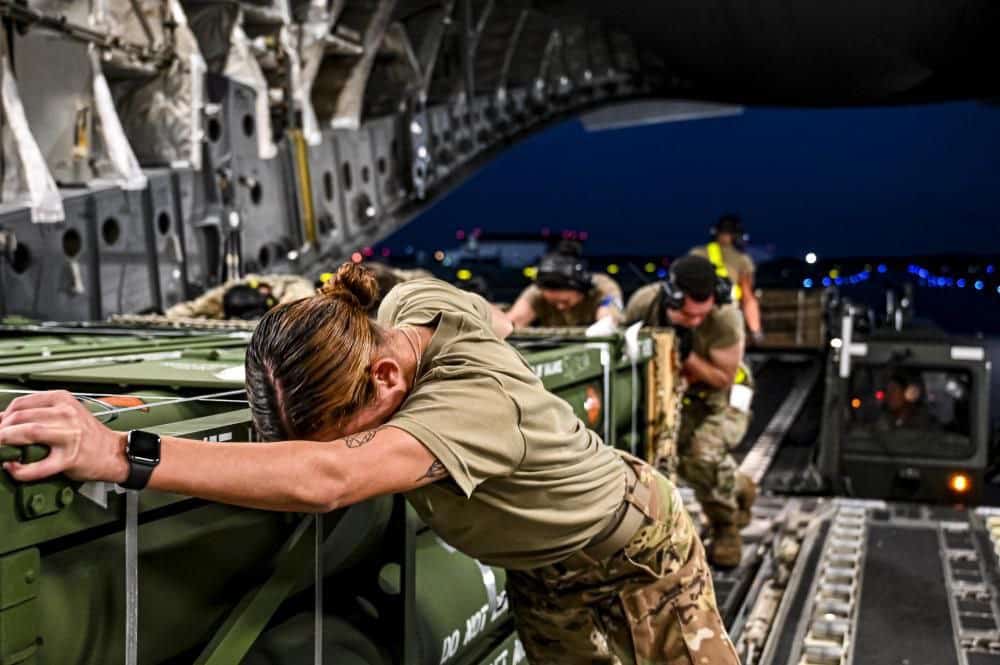US Military loading HIMARS rockets for Ukraine
In an open letter entitled “US must arm Ukraine now, before it’s too late” 20 notable American advocates for the war against Russia in Ukraine argue that the conflict has reached a decisive moment. To win, the authors insist, Ukrainian forces need an abundance of new equipment, including the constant resupply of ammunition and spare parts for artillery platforms, short- and medium-range air defense systems to counter Russian air and missile strikes, and ATACMS munitions fired by HIMARS with the 300km range necessary to strike Russian military targets anywhere in Ukraine or Crimea.
Meanwhile, the initial flood of equipment and ammunition from Washington’s European Allies into Ukraine has been reduced to a trickle. Daniel Fiott, a European defense analyst at the Vrije Universiteit Brussel, complained, “Ukraine needs hardware, not hot air.” Equally important, refugee fatigue is setting in across Europe.
Germans and Hungarians lost their patience with the unrelenting influx of refugees into Europe some time ago, but now the Poles are reaching the saturation point. Polish households confront serious economic headwinds. Poland has one of Europe’s highest inflation rates—15.6 percent in July—caused in part by the war in Ukraine. As conditions worsen in the fall and winter, it is not hard to imagine enormous public pressure on Berlin, Warsaw, Prague, Paris, and Rome to end the war in Ukraine.
The hard truth is the introduction of new weapon systems won’t change the strategic outcome in Ukraine. Even if NATO’s European members, together with Washington, D.C., provided Ukrainian troops with a new avalanche of weapons, and it arrived at the front instead of disappearing into the black hole of Ukrainian corruption, the training and tactical leadership required to conduct complex offensive operations does not exist inside Ukraine’s 700,000-man army. In addition, there is an acute failure to recognize that Moscow would react to such a development by escalating the conflict. Unlike Ukraine, Russia is not currently mobilized for a larger war, but it could do so quickly.
American military and civilian leaders routinely ignore the historical record and its lessons. Most importantly, they ignored the criticality of human capital in uniform that frequently constitutes the margin of victory in war.
On June 22, 1941, the German Wehrmacht launched its invasion of Russia with more horses than tanks. For the most part, the German ground forces were composed of Great War-style infantry divisions dependent on horse-draw logistics and artillery. The German soldiers were indisputably excellent, but only a minority were equipped with the firepower, mobility, and armored protection needed for warfare in Eastern Europe.
Of the millions of German soldiers who marched into Russia, roughly 450,000 to 500,000 were assigned to Germany’s mobile armored force, the offensive striking power that rapidly crushed its Polish, British, Dutch, Belgian, and French opponents. These soldiers were the best of the best with the lion’s share of the modern equipment.
It took four years, from 1939 to 1943, to wear down this core element to the point where large-scale German offensives were no longer possible. The critical data point to remember is that 55,000 German officers had been killed in action by October.
These German officers were among the best and most experienced officers in the army. They performed the brilliant maneuvers that brought the ill-equipped Wehrmacht to the gates of Moscow in a war on three fronts—Western Europe, the Mediterranean, and Eastern Europe. They led it through the offensives that culminated in the battles of Kursk and El Alamein.
Read the whole article here.



